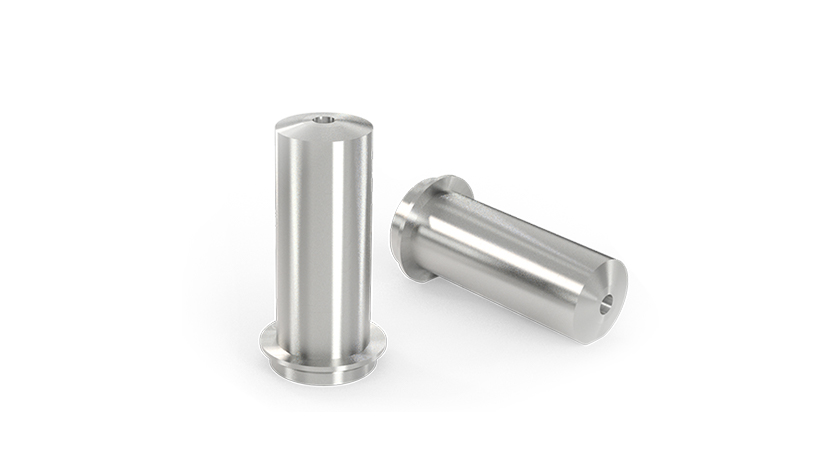
LT-APO
apochromatic cryogenic objectives with high numerical aperture
The standard series of LT-APO objectives is designed for maximum numerical aperture and widest apochromatic range at the same time. This helps to optimize collection efficiency over a broader wavelength range. The different versions cover the range from the near UV (VIO), over the visible range (VIS, VISIR), up to the (near-) infrared (NIR, IR). Their apochromatic range is mathematically defined by the range over which the focal shift is within +/- the depth of focus around an optimal focus wavelength. For Raman measurements, there are two dedicated versions available, which maximize the overlap between the apochromatic range and the Stokes shift to about 3000 wavenumbers for both most typical excitation wavelengths (532 nm and 633 nm). For best overall performance, the use of a broadband collimator is strongly recommended (see RT-APOs ). Besides, all standard LT-APOs on this page are available for 1“ and 2“ sample spaces respectively. For more details, please consult the specification datasheets, or contact our sales engineers.
| Objective | LT-APO/VIO/0.81 | LT-APO/VIS/0.82 | LT-APO/532-RAMAN/0.82 | LT-APO/VISIR/0.82 | LT-APO/633-RAMAN/0.81 | LT-APO/NIR/0.81 | LT-APO/IR/0.81 | LT-APO/Telecom |
|---|---|---|---|---|---|---|---|---|
| compatible with. | CFM I, AFM/CFM, attoDRY800 |
|||||||
| numerical aperture (NA) | 0.81 | 0.82 | 0.82 | 0.82 | 0.81 | 0.81 | 0.81 | 0.80 |
| working distance | 0.67 mm (1.40 mm)(1) | 0.65 mm (1.40 mm)(1) | 0.64 mm (1.40 mm)(1) | 0.65 mm (1.40 mm)(1) | 0.70 mm (1.40 mm)(1) | 0.67 mm (1.40 mm)(1) | 0.55 mm (1.30 mm)(1) | |
| AR coating (> 80% trasnmission) | 400 .. 1000 nm(4) | 600 .. 1600 nm | 520 .. 1600 nm | |||||
| apochromatic range(3) (δf < +/- Δ) |
405 .. 470 nm | 465 .. 590 nm | 520 .. 695 nm | 565 .. 770 nm | 632 .. 885 nm | 700 .. 980 nm | 985 .. 1350 nm | 1170 .. 1580 nm |
| environments | cryogenic temperatures, high magnetic fields, high vacuum (ultra-high vacuum on request) | |||||||
| clear aperture | 4.7 mm | |||||||
| focal length | 2.89 mm | 2.87 mm | 2.88 mm | 2.87 mm | 2.89 mm | 2.93 mm | 2.9 mm | 2.94 mm |
| weight | 43 g | |||||||
| diameter | 24 mm | |||||||
| length | 48.35 mm | |||||||
| article number | 1014313(CFM I) 1014323 (CFM I xs) |
1011767 (CFM I) 1011768 (CFM I xs) |
1015091 (CFM I) 1015092 (CFM I xs) |
1011769 (CFM I) 1011770 (CFM I xs) |
1015093 (CFM I) 1015094 (CFM I xs) |
1011771 (CFM I) 1011772 (CFM I xs) |
1012810 (CFM I) |
1021858 (CFM I) |
| download specs | LT-APO/VIO/0.81 LT-APO/VIO/0.81xs |
LT-APO/VIS/0.82 LT-APO/VIS/0.82xs |
LT-APO/532-RAMAN/0.82 LT-APO/532-RAMAN/0.82xs |
LT-APO/VISIR/0.82 LT-APO/VISIR/0.82xs |
LT-APO/633-RAMAN/0.81 LT-APO/633-RAMAN/0.81xs |
LT-APO/NIR/0.81 LT-APO/NIR/0.81xs |
LT-APO/IR/0.81 LT-APO/IR/0.81xs |
LT-APO/Telecom LT-APO/Telecomxs |
(1) Possible use with solid immersion lenses: half-ball radius < 0.65 (0.70) mm for unlimited lateral displacement or half-ball radius < 1.40 mm for coaxial approach only
(2) 4 options available: coating A 400-600 nm | coating B 600-1050 nm | coating C 1050-1600 nm | uncoated
(3) δf: chromatic focal shift, Δ = n*λref / (2*NA2): depth of focus, n: refractive index, λref : wavelength used to define focal plane with max. Δ
(4) glas transmission: see respective objective data sheets
Naming Scheme
The different objectives offered are distinguished and described by the following naming scheme:
LT is short for “Low Temperature (compatible)”.
IWDO is short for “Intermediate Working Distance Objective”.
LWD is short for “Long Working Distance”.
LWDO is short for “Long Working Distance Objective”.
APO is short for “Apochromatic”, and refers to the fact that the focal displacement curve is flat (i.e. within plus/minus one depth of focus) within the specified apochromatic range (see specification sheets of the respective objectives for further details).
/VIO indicates that the objective is most suitable in the ultra-violett to visible range
/VIS indicates that the objective is most suitable for the visible wavelength range.
/VISIR indicates that the objective is most suitable for the visible to (near-)infrared wavelength range.
/IR indicates that the objective is most suitable in the lower infrared range
/NIR indicates that the objective is most suitable for the near-infrared wavelength range.
/0.82 is indicating the numerical aperture (NA) of the respective objective, in this case NA = 0.82.

